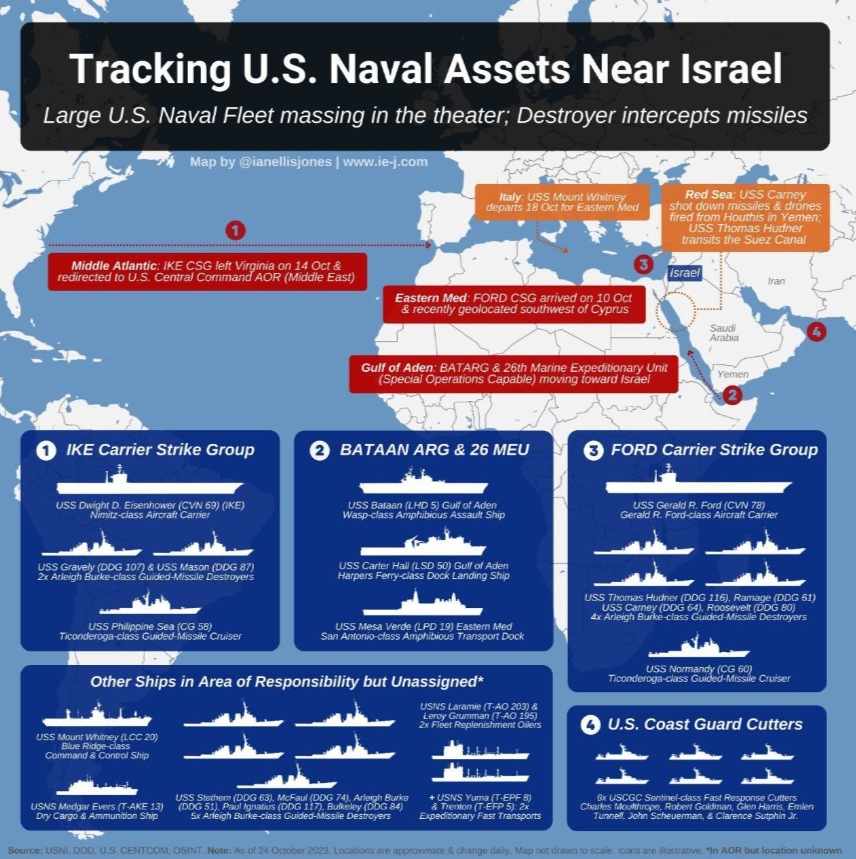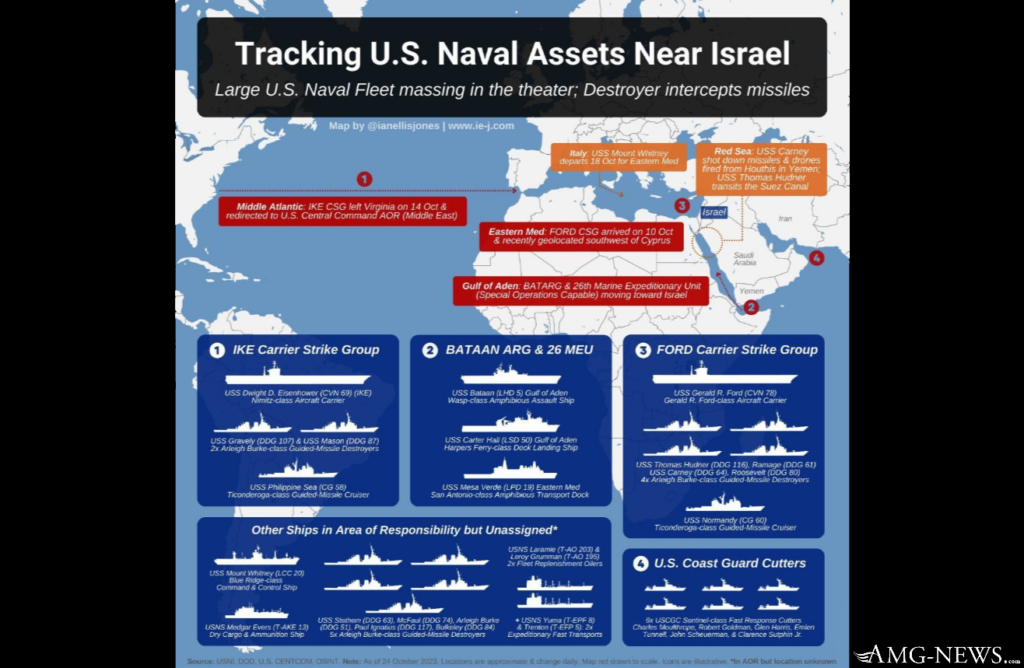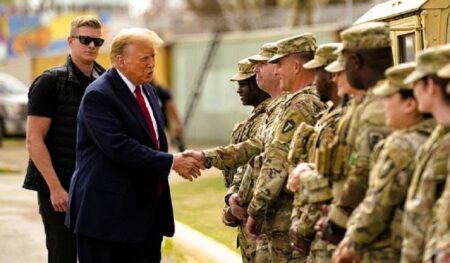The Countdown to Catastrophe: Biden’s Precipice with Iran – The U.S. Navy’s Colossal Deployment and the Imminent Threat of War with Iran
Medeea Greere, an independent publisher, is now on Telegram at https://t.me/AMGNEWS2022 and exists only on reader support as we publish Truth, Freedom and Love for public awareness. Thank You for your support!
By Medeea Greere
With tensions escalating and recent attacks on U.S. forces in the region, a massive U.S. Navy contingent sails towards the Middle East. The world stands on the precipice of a potential cataclysmic confrontation between the United States and Iran.
This move has sparked concerns about the possibility of a full-blown conflict in the region. In this article, we will delve into the factors leading up to this deployment, the stated reasons behind it, and the critical question on everyone’s mind: Could this lead to war with Iran?

The Escalation: Recent Developments
Tensions between the United States and Iran have been simmering for years, but recent events have heightened concerns about the potential for a full-scale conflict. The Pentagon’s decision to deploy a massive naval force to the region came after a series of attacks on U.S. and coalition forces in Iraq and Syria.
PENTAGON Statement:
“Between October 17th and the 24th, U.S. and coalition forces have been attacked at least ten separate times in Iraq and three separate times in Syria via a mix of one-way attack drones and rockets… We know that the groups conducting these attacks are supported by the IRGC and the Iranian regime.
We are seeing the prospect for more significant escalation against U.S. forces and personnel across the region in the near term coming from Iranian proxy forces and, ultimately, from Iran.”
The U.S. Navy Deployment: What Does it Include?
The United States’ military response to these attacks is substantial, to say the least. The deployment consists of two carrier strike groups, eleven Burke-class destroyers, Ticonderoga-class cruisers, amphibious assault ships, THAAD and Patriot missile defense systems, multiple fighter jet squadrons, strategic bombers, and undisclosed assets. This display of military force signals a clear intent to defend U.S. interests in the Middle East.
The Iran Question: Probability of Escalation
Now, let’s address the burning question: What is the probability that these developments will lead to a war between the United States and Iran? To get a clearer picture, we must consider the historical context and the motivations of both sides.
ALSO: Operation Blackout USA: How to Survive 365 Days of Darkness
Historical Context: The United States and Iran have a complex history of diplomatic tensions, often rooted in issues like Iran’s nuclear program and allegations of state-sponsored terrorism. However, both countries have also shown a willingness to engage in negotiations and diplomacy when the circumstances allow.
Motivations: Iran’s support for proxy groups in the region and its alleged involvement in recent attacks on U.S. and coalition forces have undoubtedly raised concerns in Washington. The U.S. government, under President Biden, has emphasized a commitment to protect its troops and interests abroad. However, it’s crucial to note that both sides have indicated a desire to avoid an all-out war.
The Uniparty Regime Controversy
While the focus is understandably on the potential military conflict, it’s worth mentioning the broader political context. The reference to a “Uniparty regime” and accusations of election theft are part of a contentious and polarized domestic political landscape in the United States. However, these domestic issues, while important, must be separated from the international situation and the decisions made by the U.S. government.
WARNING: Watching The Following Video Will Give You Access To Knowledge The Government Does NOT Want You To Know About
The Way Forward: Diplomacy and De-escalation
In these tense times, it is essential to prioritize diplomacy and de-escalation. The international community, including regional actors, should encourage dialogue and peaceful resolutions to conflicts. War should always be the last resort, as it brings unimaginable human suffering and economic consequences.
In conclusion, the situation in the Middle East is undeniably tense, and the deployment of a massive U.S. Navy contingent raises legitimate concerns. However, the path to peace remains through diplomatic channels, and the world watches closely, hoping for a peaceful resolution to these escalating tensions.








![BREAKING: CANADA IS TERRA NULLIUS! King Charles Admits ‘Unceded Land’ – Commander Trump Holds Legal Ground to Annex the 51st State [VIDEO]](https://amg-news.com/wp-content/uploads/2025/05/King-Charles-Admits-‘Unceded-Land-450x280.png)


